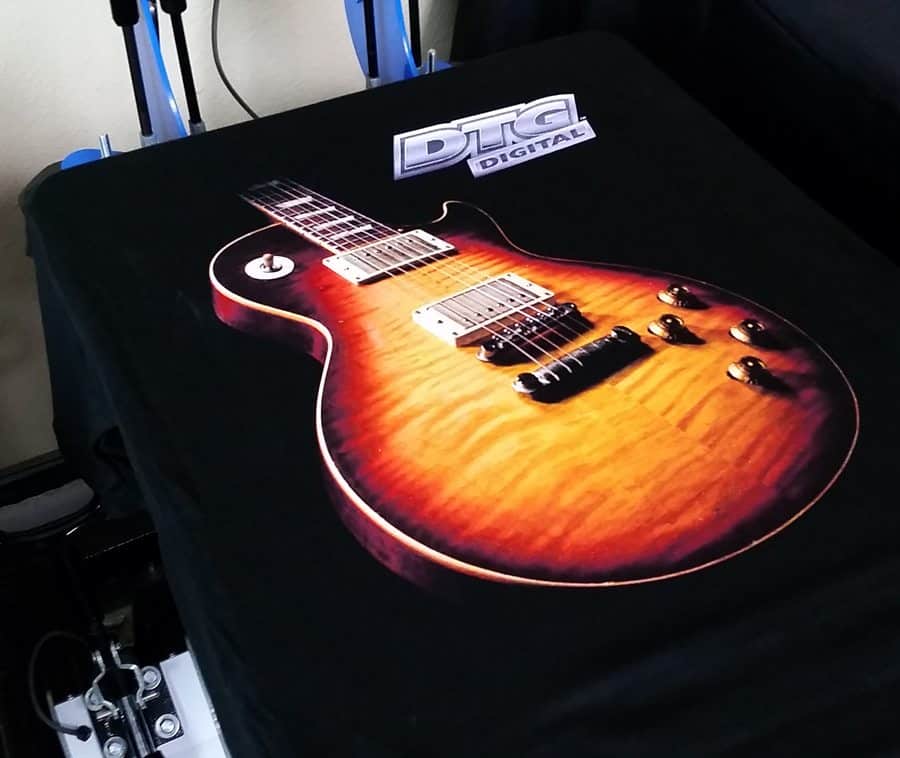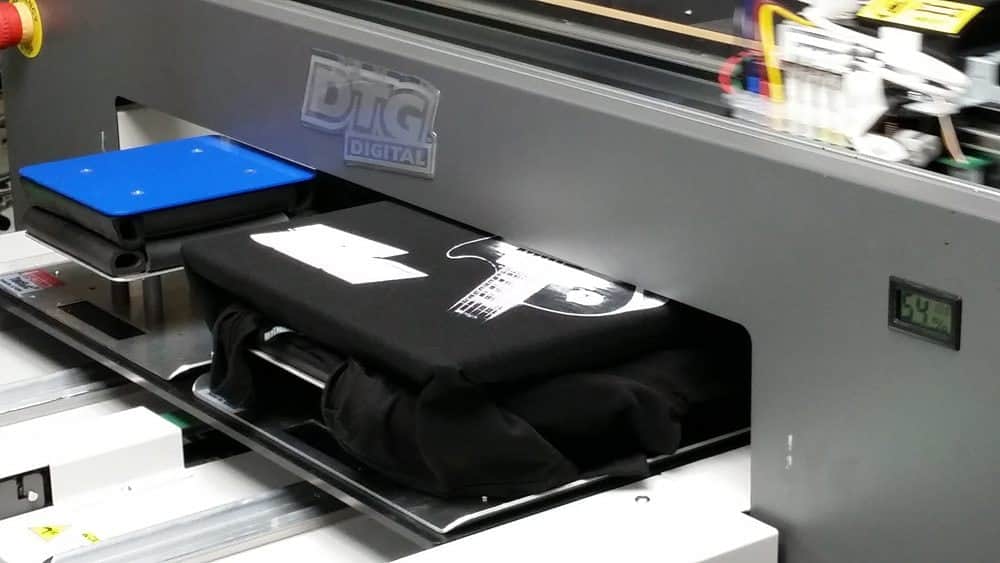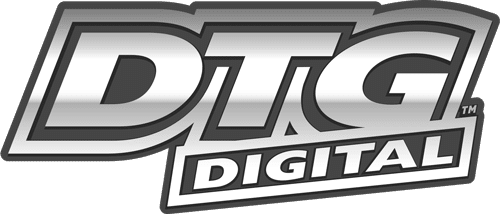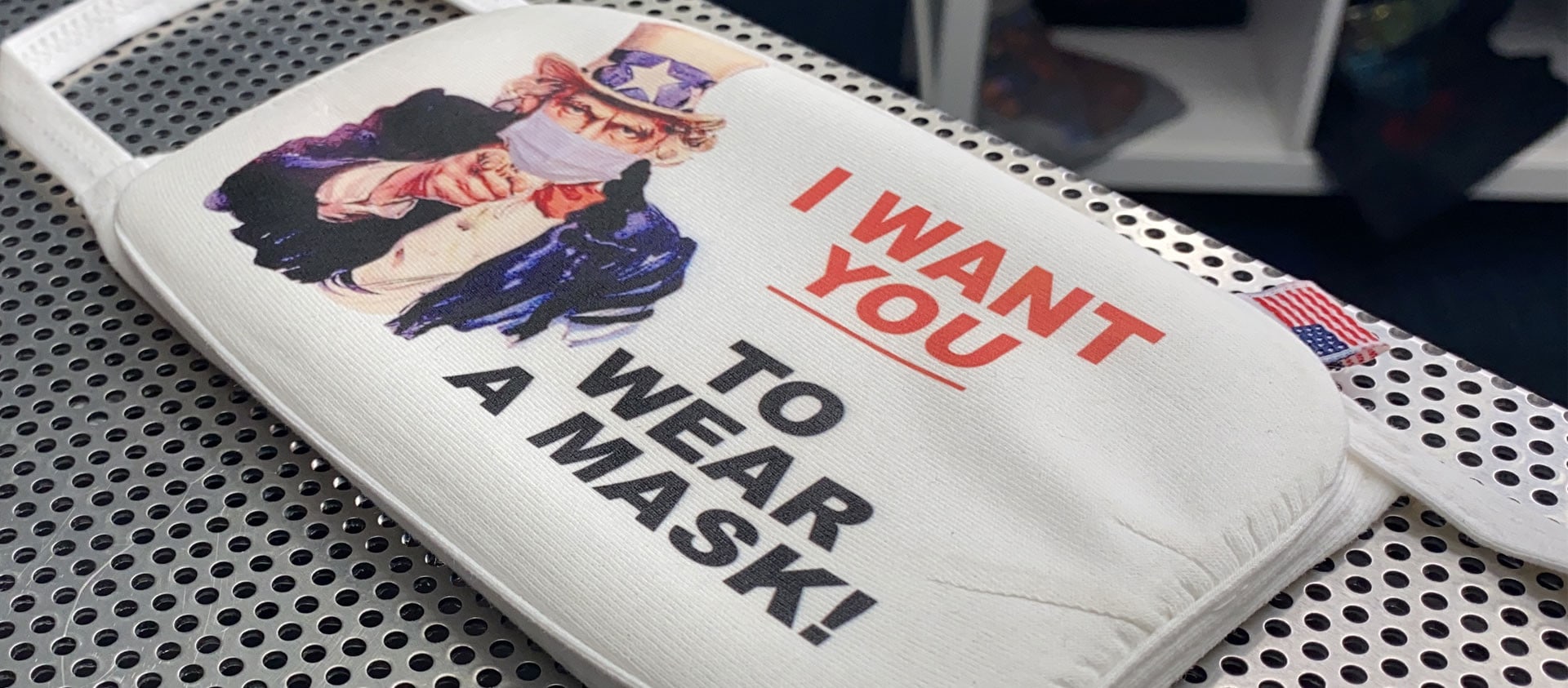Don’t Put All Your Eggs in One Basket
So, Why would you want to consider custom t-shirt tags on your custom designs? Simply put, extra SALES!
As a garment decorator, it’s easy to misunderstand the importance of what offering custom t-shirt tags can offer. Often the decorator understands this. Their focus is to label their own branded garments.
Since 1996, when I first entered the t-shirt industry, there was one common thread woven throughout my experience; there are many people who want to create their own line of branded shirts. The typical process to meet this goal was to purchase equipment, design shirts, private label them, and then find buyers. By the hundreds and hopefully even by the thousands!
The problem? There is a fair chance your t-shirt line will get lost in the abyss of online designs. What I’m stating is you will have to find ways to stand out. Ways to make your brand shine above the competition.
And, You’ll need lots of persistence. Think about this: in 1975, Gary Dahl sold a pet rock to well over a million customers, something in which I wouldn’t think possible, but it happened.
So it’s not a matter of whether you should begin a clothing line, it’s a matter of if you begin a clothing line, are you prepared to stick it out?
Make sure you have other income streams to support your Endeavor. Making sure your private label will either sustain your personal income goals or if not, how can you subsidize your sales to meet those goals?

Know Your Competition
When I began my screen printing business in 1998, I went around to every competitor in my area and introduced myself. There are always areas of specialty. Where your skills Don’t overlap their skills, and they have to find someone else. Sometimes they simply get too busy and want to farm out some of their smaller jobs. You can learn a ton by making polite business relationships with some of your competition.
I let them know what my services were and if they needed anything from me, even though they were competitors, I would be more than willing to help. Almost every person I talked to in these companies were very welcoming and supportive.
By the time I sold my company 13 years later, I had printed or fulfilled one or more of my services to over half of these companies. I even had continual repeat business from a select few who saw the value in what I offered. In some way’s, we lifted each other up.
I give this illustration because one of the biggest concerns business owners have is that their competition will get the work they are seeking. And sometimes that’s true. They will outbid you, or the unscrupulous ones will use your weaknesses against you when bidding a job. But most will concentrate on their work and their bid.
What I had done was build a referral network by having my competitors potentially find jobs on my behalf, even though they weren’t selling my services.
When custom tagging or labeling is something you implement for your own t-shirt line, if you offer this service to others, you now open up a much larger market than what you can focus in on yourself.
The High Importance Of Labels for Branding
In 2017, the Specialty Graphic Imaging Association (SGIA) did an industry survey on the garment decoration community.
In this study, 61% of companies surveyed offered some post-production or finishing services to their customers and 65.9% of those offered tagging and bagging the garments.
The additional studies within this survey lead to the conclusion that as printing facilities offered more post-production services and they implement these services efficiently, “the better off they are regarding sales growth.”
According to the SGIA survey, the efficiency of creating these labels is also of high importance. I’ll briefly go over each method of custom t-shirt label creation alongside the pros and cons of each.
Without going into too much depth of each process, these are basic generalizations to give you an understanding of each methodology.
A woven label is a known standard style for most higher end garments. This type of label is precision stitched and extremely durable.
Pricing will vary depending on the style of label, but in small quantities (around 25), the average price for a good quality label is $2. These are either sewn in or for a higher price point, an iron-on or heat pressable version is available.
Pros: Durable, familiar, soft feel
Cons: Higher cost for small quantities, single color lettering (more colors = more $$), needs to be sewn into the fabric if sourcing you must send your garments to printer, high equipment costs if you want to manufacture woven labels in-house
Pad printing is a method that has gained quite a bit of traction through the years.
With pad printing, you create a metal plate for each color you want to print. The simple explanation: A black image is printed onto a clear film and “burned” (using a UV light source) onto a photopolymer plate with a halftone screen applied to the design.
Where the image is, it’s recessed into the photopolymer plate. The plate is inked up and scraped clean, and wherever the recessed image on the plate is, ink remains.
An arm with a silicon rubber pad moves over the plate and presses down, transferring the ink to the silicone rubber pad. This pad is now moved over to the final substrate and pressed, leaving the impression on whatever you are printing on.
Pros: Quick transfer process, can handle extremely small text and fine graphics, the pad printer can be used for promotional products, low cost for larger volumes
Cons: Higher cost for small quantities, if sourcing you must send your garments to printer, high equipment expense if doing in-house
Similar to Pad Printing each color needed requires a separate screen (or stencil) made for that color. The image is “burned” using UV light onto a screen coated with a UV-sensitive emulsion and washed out with water.
The image is then removed with the water resulting in the original screen allowing ink to be pushed through onto your garment then cured with heat.
Tags can be made by printing multiple up and cutting the tags out later, or the image can be printed directly onto the garment.
Pros: Multiple colors of print available, can achieve fine details and small lettering, low cost for larger volumes, equipment costs can be fairly low or started on a budget
Cons: Higher cost for small quantities, if printed on tags those tags still need to be sewn into the garment, traditionally a messy process, need more space due to equipment and processing needs, if printing directly on to garment and you do not print in-house, must send out to a fulfillment company
Direct to garment (DTG) printing is the use of an inkjet printer that jets a textile ink directly onto the fabric. It utilizes a CMYK process printing with white ink (C: Cyan, M: Magenta, Y: Yellow, K: Black, W: White).
With this technology, smooth gradients can be printed with much better clarity than traditional screen printing methods. You take your artwork and bring it into a RIP (Raster Image Processing) software which is used to indicate the size, resolution location and type of print you want on your garment
The shirt is typically cured with a heat press which gives you the ability to operate in limited space. You print directly onto the fabric using a special platen and a smaller heat press used for hats.
Pros: Can print extremely small graphics, prints hundreds of thousands of colors using CMYKW inks, quick printing process, can be used to print full sized graphics on garments as well when printing labels cost is pennies
Cons: Works best on 100% cotton (due to the small print area, it can work effectively on blends). Has higher equipment cost, curing ink most likely will take longer than to print therefore additional heat presses may be needed to keep up with printing. , It has easy maintenance but if not performed could cause problems for your system. When using white ink, the garment needs to be pretreated.
Custom Transfers:
There are several types of customer transfers available.
First up is screen printed transfers. But they have the same limitations as mentioned above. You would print the transfers onto a release paper, cut out then heat pressed on the fabric.
Another option uses standard inkjet or laser printers. This is an older transfer method that has been around for years. When heat pressed, a film or residue is left behind. If the paper has a clear backing, it can only be used on light garments. If it has a white backing, it would have to be trimmed to a perfect size and then heat pressed. They leave an edge of material around the shape of the image.
And then there’s Print and Cut systems. These are printers with a cutting system that can contour cut the white material for you. Usually, an eco-solvent ink is used to print onto a special heat pressable white fabric then the cutter will contour cut the labels.
After the machine has printed and contour cut, you peel away what you don’t want then apply a mask to the material – peel it away and heat press the remainder onto the garment. Systems like this are often used in the sign industry.
Laser printing system with white toner: Ultimately this is the best digital transfer system because you can print the white toner as your base, which is needed for dark garments and the system can sit for long periods of time with no use.
When heat pressed, only the print is transferred to the garment, eliminating the large rectangular adhesion from typical transfer systems. The inkjet print and cut as well as the laser printing system with white toner can be used on various substrates including polyester. Similar to other methods, you can print multiple labels on a sheet of paper – cut then heat press. Pros and cons refer to Laser with white toner.
Pros: Each label would be pennies, lower cost of equipment compared to most methods, use of promotional products. Has a quick transfer method to the garment, hundreds of thousands of colors, can sit for long periods of time with no use. Does not cause problems that inkjet can, no maintenance on equipment, digital printing so minimal art preparation.
Cons: If using only for labels the equipment cost would be too high

Find a Good Single Source Equipment Supplier Before you Start
Even though the list isn’t as detailed as it could have been, you can see there are many options available.
If you wanted to print in-house and didn’t want to carry a large inventory of printed garments, using a direct to garment printers like the M2 and the Digital FX (laser toner with white) system are a great choice. It’s a combination that gives you the ability to print on every type of fabric as well as promotional products.
Finding the right method for your needs is critical for efficiency and growth, and we at ColDesi are always excited to assist in making customers dreams become a reality.






